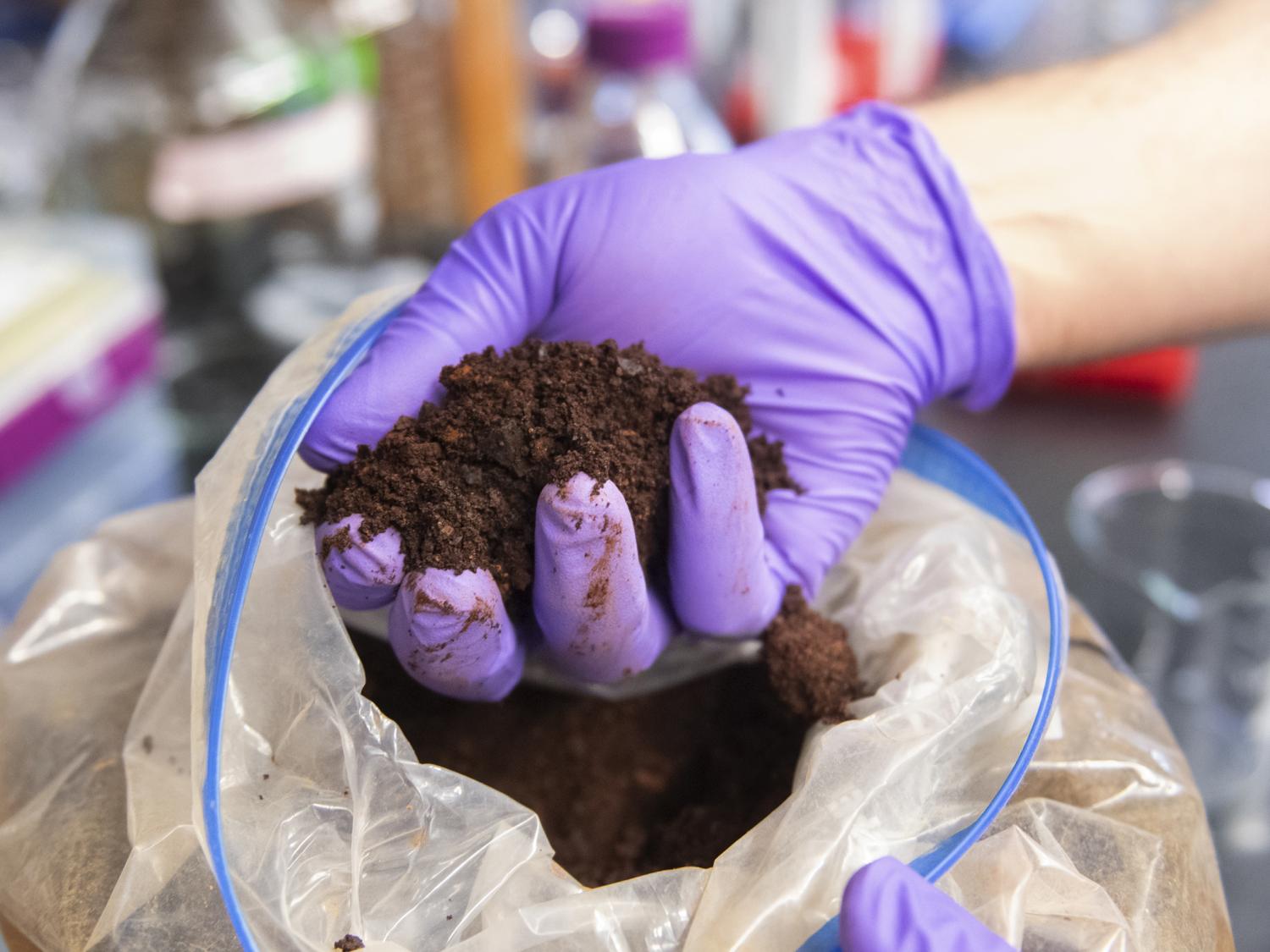Will rare earth elements soon be separable from each other in an environmentally friendly and efficient way on a large scale?
Scientists at Penn State University have succeeded in developing a biological method for separating individual rare earth elements (REE), for which they used a natural protein, according to a press release from the university.
Rare earth elements do not occur individually, but always in conjunction with other REEs. The very similar metals are each used in different technologies, such as renewable energy or consumer electronics, and must therefore be separated from one another. This is currently done in very complex processes that involve, among other things, the use of toxic chemicals. The method now being researched could provide a more environmentally friendly alternative.

Researchers from Penn State University have discovered a protein that ist able to differentiate between rare earths. Photo: Penn State.
Protein separates rare earth oxides from each other
The new method was developed by observing nature itself. To separate the individual rare earths, the researchers used a natural protein called lanmodulin, which they extracted from oak buds of the bacterium Hansschlegelia quercus. In contrast to lanmodulin from other bacteria, this form is characterized above all by its ability to distinguish between individual rare earths and thus very small sizes. The reason for this is the protein’s ability to combine with another molecule to form a new unit – the so-called dimer. Specifically, this means that lanmodulin binds light rare earth elements such as neodymium strongly to itself. On the other hand, when the protein encounters heavy rare earth elements such as dysprosium, it binds the latter much less strongly to itself and prefers the form of a single molecule, a monomer.
In the further course of the study, it was found that this method can be used to separate light and heavy rare earth elements from each other in a single step at normal room temperature and without chemical solvents.
On the way to green technology?
According to Joseph Cotruvo Jr., one of the scientists involved, the team also hopes that the process can be optimized so that the greatest challenge can be mastered: separating neighboring rare earths on the periodic table. Currently, it is only possible to separate heavy and light rare earth elements.

Research group leader Joseph Cotruvo Jr. at work in the lab. Photo: Patrick Mansell / Penn State.
The research group, which has already filed a patent application, then plans to commercialize the method, according to the Penn State press release. With the help of the new method, it is conceivable that mining and recycling processes for the entire technology industry, which is dependent on rare earths, could be made more environmentally friendly and efficient.
The full report on the study can be found in the science journal Nature.
Read more: Research teams around the world are working to develop additional sources of rare earths and other critical minerals alongside traditional mining. To do this, they are using plants and bacteria, among other things.
Featured image: Patrick Mansell / Penn State


